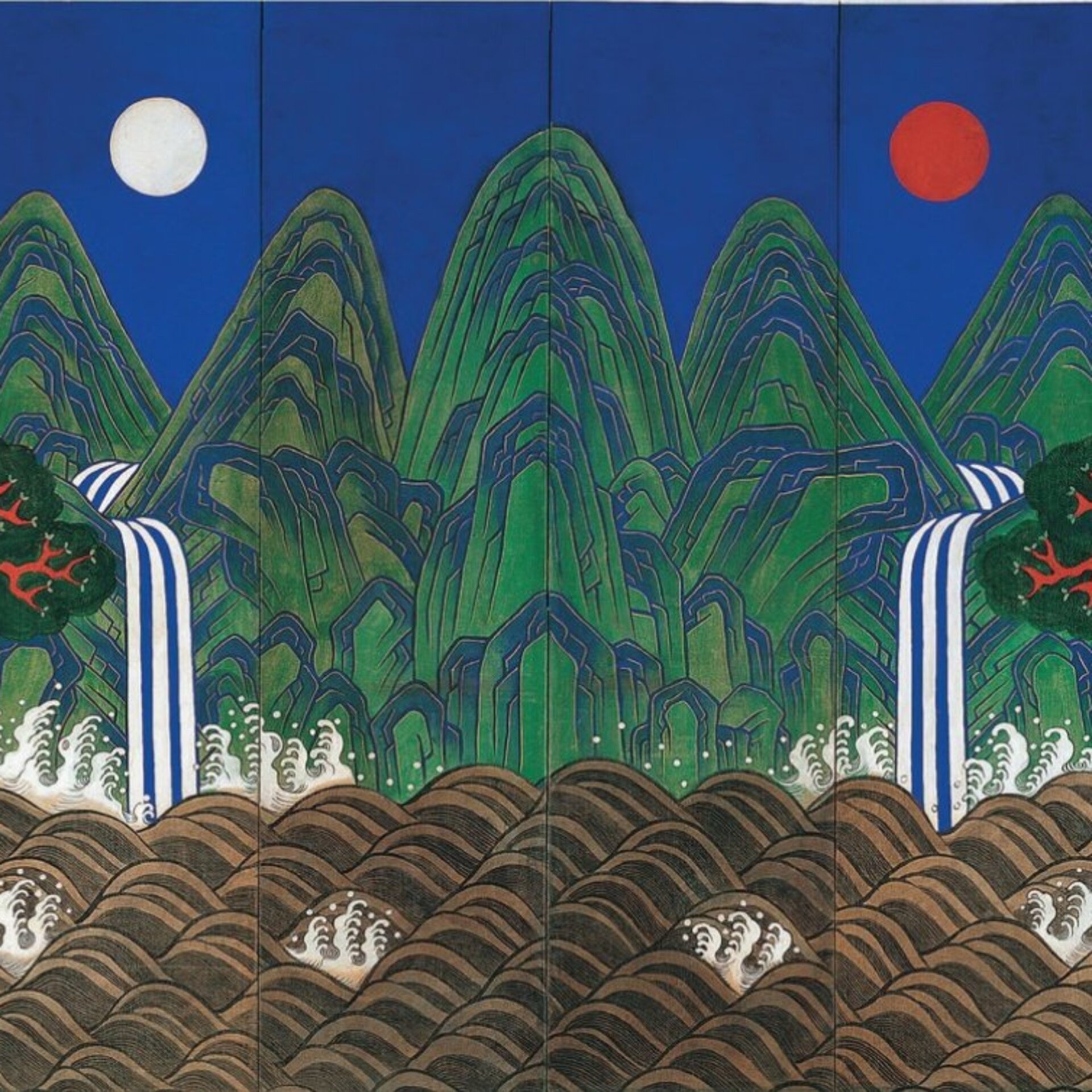The Princessehof National Museum of Ceramics presents: KOREA. Gateway to a rich past from 16 October 2021 to 21 August 2022. The exhibition unravels the country's rich past and ancient culture on the basis of themes such as food culture, beauty ideals and rituals. Top pieces from the National Museum of Korea in Seoul will be brought to Leeuwarden especially for the exhibition. This is the first time they will be exhibited in the Netherlands. The exhibition includes precious jade-green celadon, pure white porcelain and ancient pottery, functional items such as musical instruments, as well as film footage and costumes. Contemporary work by Korean artists confirm that ceramics still play an important role in Korea today.
Nowadays we primarily know Korea from Squid Game, the unprecedented popularity of K-Pop groups like BTS, Korean cuisine, and the Oscar-winning film Parasite. The Princessehof delves into the cultural history of this extraordinary country on the basis of its ceramics, which are deeply intertwined with Korean traditions. As a country of modest size, surrounded by cultural giants such as China and Japan, it has managed to retain an unmistakable individuality, which is reflected in a distinctive ceramic tradition, and also expressed in Hangeul, the Korean script. The design duo Koehorst in 't Veld created an original and modern design for this exhibition, which is accompanied by an extensive programme of festive and unifying activities. The exhibition is also a perfect occasion to celebrate the 60th anniversary of trade relations between the Netherlands and South Korea.
From food culture to rituals
The exhibition unravels the long history of Korean culture, in which ceramics has always played an important role, along thematic lines. From timeless onggi stoneware storage jars, in which family recipes such as kimchi were prepared for generations, to video clips of meokbang: a new craze in which people eat under the watchful eye of online viewers. Luxury objects for the study and status symbols like a black hat make Korean 'yangban' elite culture palpable. Refined celadon boxes from the Goryeo dynasty (918-1392) for storing makeup confirm the long history of the specifically Korean beauty ideal now known as K-beauty. The role of ceremonies and rituals is also discussed in detail. Incense burners, vases, dance robes and other ritual objects provide insight into the many ceremonies that have formed an important part of Korean society over the centuries.
Contemporary
In addition to historical objects, the Princessehof will also exhibit high-profile works by three contemporary South Korean artists, curated by Tanya Rumpff: Yee Sookyung (1963) Juree Kim (1980) and Kyung-Jin Cho (1987). In Yee Sookyung's Translated Vase, ceramic shards from works by contemporary ceramic masters are glued together with gold lacquer using the Japanese kintsugi technique. Kyung-Jin Cho's installation Swing Jam provides a meditative experience due to a ball floating between earthenware pots and gently tapping them. Juree Kim exhibits a clay sculpture of a traditional Korean building surrounded by water. The water erodes the clay for the duration of the exhibition. causing the work to slowly dissolve.
Sounding board group
The Princessehof worked with a sounding board group of Dutch Koreans and Korea specialists to realise this new exhibition. Jörgen Tjon a Fong, known from the podcast Museum in the Making and involved with the exhibitions Zwart in Rembrandts tijd and the slavery exhibition at the Rijksmuseum, has been appointed moderator of the sounding board meetings. The eleven panel members provide input and feedback on the plans for the exhibition, from content to design and from marketing to the programme of activities. Some of the panel members also tell personal stories in the audio tour that accompanies the exhibition.
Collaboration
Dozens of loans are coming to Leeuwarden from South Korea. The highlights of the exhibition are coming from the National Museum of Korea in Seoul. The Princessehof has a longstanding relationship with this museum; loans were previously included in the Sunken Treasures exhibition, and a large collection of European and Asian ceramics from the Princessehof is currently on display in Seoul. Additional objects from National Museum of Ethnology (Museum Volkenkunde) in Leiden and Gugak National Center in Seoul will also be displayed in this wide-ranging exhibition about Korea in the Princessehof.
Publication
A richly illustrated publication will complement the exhibition. The introduction by Hee-Jeong Kim, curator at the NMK, gives an overview of Korean history and the role that ceramics has played in it. Based on the themes of the exhibition, in her in-depth discussions of a selection of objects, curator and exhibition mastermind Eline van den Berg expands on the various aspects of Korean culture. This bilingual Dutch-English publication is available in the museum store.
Sun-Moon-FivePeaks-screen_창덕6416 - copyright National Palace Museum of Korea
With thanks to the embassy of the Republic of Korea to the Netherlands, the National Museum of Korea, the Gugak Centre, Museum Volkenkunde en Peter van Kinderen
This exhibition has been made possible by the Mondriaan Fund (the public fund for visual art and cultural heritage), the Korea Foundation, Prins Bernhard Cultuurfonds and her Angela E fund, Foundation Van Achterbergh - Domhof and the Society of Friends of the Princessehof.
Partners of the Princessehof: Ottema-Kingma Foundation, Society of Friends of the Princessehof and Club Céramique.
The Princessehof National Museum of Ceramics is co-financed by the Ministry of Education, Culture and Science and the Municipality of Leeuwarden.
